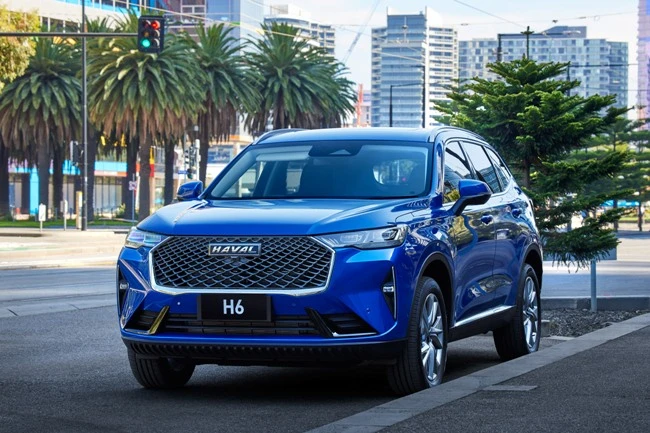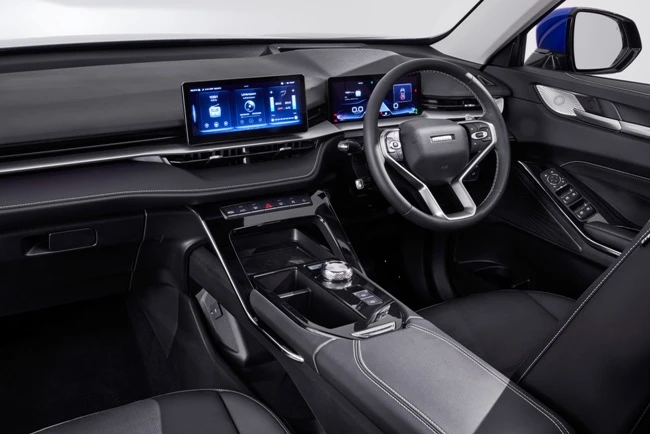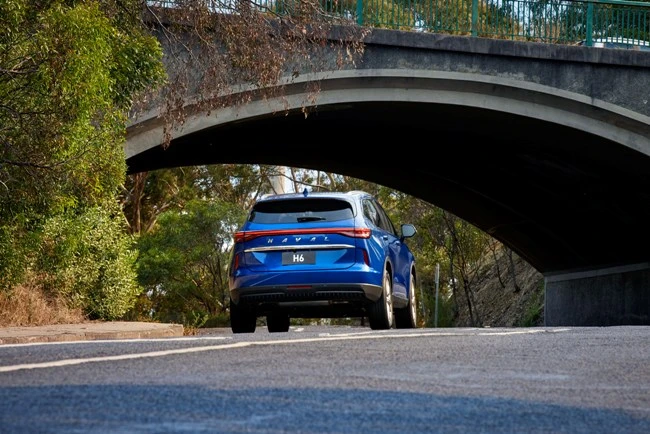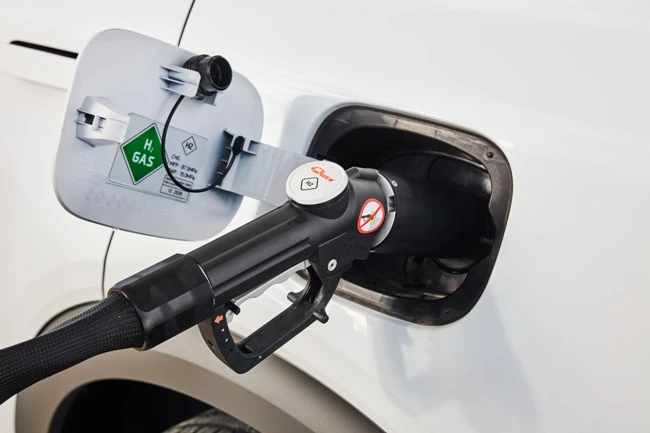Archive for March, 2021
What Future Lies Ahead for Diesel-Powered Cars?
It’s no secret that a growing number of countries around the world are looking to promote the uptake of ‘green’ vehicles. What with concerns around the environmental and health implications, many places have even set out plans to ban production of new petrol and diesel-powered cars from the end of this decade. And while Euro6 diesel emissions are considerably ahead of where they were a decade ago, now significantly reduced, that hasn’t dampened the calls for change in the broader community.
Faced with mounting pressure associated with corporate social responsibility, as well as regulatory change, more and more car manufacturers are committing to cleaner fuel technologies.
But what does that mean for the beloved diesel engine? After all, many of the commercial vehicles of today rely on diesel, and locally, Australia’s obsession with SUVs and utes has also ensured that it remains particularly relevant in the new car market. Does significant change lie ahead?

How popular are diesel vehicles in Australia?
It’s easy to say that the wheels were first put in motion following the ‘Dieselgate’ controversy with Volkswagen and a number of other car brands, where diesel emissions cheating devices were masking the true extent of their emissions. Spurring on a stricter suite of regulations, many auto-makers felt the burden of these changes would constrain margins and ultimately, that money would be better deployed towards more sustainable solutions for the long-term.
The impact of these changes, particularly in the European market, should not be dismissed by new car buyers on the other side of the world here in Australia. After all, we are a car importer, and Australia often receives Euro-designed vehicles.
However, as alluded to above, Australia’s new car buyers have shown little sign of a diminished appetite for diesel vehicles, with sales still strong. During 2020, Australians purchased 290,659 diesel cars. Although this was 12.5% lower than the 332,219 bought in 2019, when you take into consideration the broader slowdown in the market due to COVID-19, where overall sales fell 13.5%, the results were effectively in line with one another. Meanwhile, of the existing vehicle fleet on our roads, one in six cars are powered by diesel, or a total of 2.6 million cars.

What can we expect here in Australia?
It’s quite clear that the preference of local car buyers is markedly different to that of new car buyers in other regions, particularly Europe and Asia, where our love of 4WDs and utes cannot be matched.
Diesel, despite its drawbacks, is still embraced on account of the fuel economy and pulling power that is needed amid the sprawling nature of our cities, as well as our love of the great outdoors. It’s also unlikely that until such time that alternative fuel technologies like hydrogen and electricity become mainstream, and are even tailored towards our local taste for SUVs and utes, our own ‘bubble’ may continue to remain popular. The recent decision by various state governments to tax road usage among electric vehicles won’t help incentivise buyers to make the switch either.
Nonetheless, the key takeaway is that it is unlikely to expect local regulatory changes any time soon. What does that mean for us by the end of this decade when our peers have moved on? For now, we’ll have to wait and see.
GMSV Releases Corvette Pricing & Addition To Silverado.
GMSV has today (March 30, 2021) released details of an addition to the Silverado range, plus confirms pricing for the Corvette.
The Chevrolet Silverado LT Trail Boss will come with a recommended retail price of $106,990. Drive is courtesy of a 6.2L EcoTec3 V8 and ten speed auto, and offers a towing capacity of 4.5 tonnes. GMSV’s Director, Jo Stogiannis, says the Trail Boss is intended to be the off-road warrior of the range. “LT Trail Boss personifies what Silverado is all about. It’s big, it’s tough and it comes ingrained with brand-DNA which showcases qualities of strength, power, performance and no-nonsense work-hard attributes.”
A factory fitted suspension lift kit raises the LT Trail Boss by 25mm at the front, and 30mm for the rear, providing extra off-road clearance and peace of mind. Ride quality and handling is enhanced thanks to Rancho monotube shock absorbers, and extra grip comes from a mechanical rear locking diff. Style and practicality see the 18 inch black painted alloys contrast and complement the black front and rear bumpers. Although intended to be the off-road Silverado of choice, there is no skimping on safety or comfort. Both front seats are heated, feature ten way power adjustment, and the steering wheel is heated also. Wireless Android Auto and Apple CarPlay is standard. Front and Rear Park Assist will ensure easier parking, and safety on tarmac has Lane Change Alert with Side Blind Zone Alert and Rear Cross Traffic Alert to look after all aboard.
Although intended to be the off-road Silverado of choice, there is no skimping on safety or comfort. Both front seats are heated, feature ten way power adjustment, and the steering wheel is heated also. Wireless Android Auto and Apple CarPlay is standard. Front and Rear Park Assist will ensure easier parking, and safety on tarmac has Lane Change Alert with Side Blind Zone Alert and Rear Cross Traffic Alert to look after all aboard.
To ensure off-roading enjoyment is enhanced, Hill Descent Control is standard, plus a heavy-duty air filter provides clean air for the V8, and underneath, there are all-terrain skid plates to provide extra protection.
Orders for the LT Silverado Trail Boss are being taken now, with deliveries scheduled for mid-2021.
GMSV also confirmed pricing details for the hotly anticipated Corvette. There will be five models available initially, all with high specifications. Both coupe and convertible body types will be available, with the 2LT and 3LT trim levels plus a special Carbon Edition package. Motorvation is courtesy of a 6.2L V8 producing 370kW and 637Nm with drive to the rear wheels via an eight speed dual-clutch auto.
The recommended retail pricing structure starts with the 2LT coupe from $144,990, and the convertible from $159,990. The 3LT coupe starts from $160,500, whilst the convertible starts from $175,500. Pricing for the Carbon edition is yet to be confirmed. This will be built on the 3LT Coupe body, and will feature premium wheels, a premium brake caliper package, a hand-picked interior trim, plus a build plate and owners’ pack.
Australian specification Corvettes will be built with higher equipment levels to enhance the appeal. Known as the Z51 Performance Package with Front Lift, Ms Stogiannis says: “Overwhelming feedback is that our intended customers are performance enthusiasts, they want to have the ability to experience the C8 Corvette to its fullest potential.” The package is an option in the Corvette’s home country. Front Lift raises the nose of the Corvette to minimise potential contact damage on kerbs, and it’s a simple button push to do so. Included in the Z51 package is the Magnetic Selective Ride Control system, with millimetre precision thanks to a real-time damping system that reacts in a millisecond to the changes in road surfaces. Sounds come from a dual mode exhaust, stopping is thanks to Brembo, and rear grip is enhanced via an E-LSD. The body will have a front splitter and a rear spoiler. Engine longevity is increased via extra cooling .
Front Lift raises the nose of the Corvette to minimise potential contact damage on kerbs, and it’s a simple button push to do so. Included in the Z51 package is the Magnetic Selective Ride Control system, with millimetre precision thanks to a real-time damping system that reacts in a millisecond to the changes in road surfaces. Sounds come from a dual mode exhaust, stopping is thanks to Brembo, and rear grip is enhanced via an E-LSD. The body will have a front splitter and a rear spoiler. Engine longevity is increased via extra cooling .
All versions will have a full colour Head Up Display, and passengers will enjoy a 14 speaker Bose premium sound system.
The cars are factory right hand drive, the first to come to Australia in its history. Bowling Green in Kentucky is the factory’s location, and they’ll roll off the line in late 2021, with some deliveries currently scheduled in the same period, with the rest in early 2022.
Of the car, Ms Stogiannis said: “Corvette is an iconic car and there is a massive groundswell of interest and anticipation building ahead of its local launch. We have every expectation it will more than live up to its legendary status.”
(Information courtesy GMSV).
Haval H6 Update Is Value Added
Haval continues to push for a bigger slice of the SUV pie, and with the H6 due for an April on-sale date, buyers will be able to to sample an extensive standard equipment list inside a facelifted vehicle.

2021 Haval H6
Pricing starts from a competitive $30,990 drive-away for the H6 Premium model. Power is courtesy of a 2.0L turbo petrol engine and drive is via a seven speed dual-clutch auto. This is the entry level model of a range of three, with Lux and Ultra adding in more value.
Premium packs in: 18 inch alloy wheels and Tyre Pressure Monitoring, with LED headlights and DRLs showing the way. Inside is a pair of 10.25 inch screens with the centre screen featuring Android and Apple apps. Safety sees AEB with cyclist and pedestrian detection, seven airbags including centre console airbag, Lane Departure Warning and Lane Keep Assist backed up by Traffic Sign Recognition. Lane Change Assist and Blind Spot Monitoring, plus Driver Fatigue Monitoring round out the stand equipment list for the Premium.
Lux specifications see even more, with roof rails on top, LED fog lamps up front, and extra comfort inside. There’s leather on the steering wheel, and the seats are clad in eco-leather. The driver has a six way powered seat including lumbar adjustment. Dual zone climate control provides the airflow, and sounds are via a DTS compatible eight speaker audio system. Rear vision is improved through an anti-glare mirror and a 360 degree camera system. Adaptive Cruise Control with Stop/Go functionality pairs with Intelligent Cruise Control and Traffic Jam Assist.

2021 Haval H6
Haval H6 Ultra is available in both 2WD and AWD. Extra features see 19 inch alloys, a panoramic sunroof, and a powered tailgate. The centre touchscreen goes up to 12.3 inches in size, a heated steering wheel provides comfort on cold days as do heated and vented front seats, and extra info for the driver is via a full colour Head Up Display. A wireless charge pad and four way powered passenger seat add convenience. Rear Cross Traffic Alert with automatic braking, and an automatic parking system feature as standard in the Ultra. Drive is engaged via a rotary dial, not unlike that seen in the Haval’s Korean competition.
Sizewise it sits between the medium and large medium classes. The overall length is 4,653mm, and has a wheelbase of 2,758mm. It’s broad at 1,886mm and weights, thanks to a reduction scheme, just 1,550kg (dry). The overall size has it above RAV4, Hyundai Tucson, and Mazda CX-5.
Styling changes see a sleeker presence up front, with slimline headlights, a bluff looking frontal treatment, and integrated intakes at the front bumper extremes. The window line appears to have a slightly reduced glasshouse, and a strong presence line joins the fenders to the reprofiled tail lights. The overall style evokes hints of Range Rover and Land Rover Discovery.
Set up a test drive via your Haval dealer here.

2021 Haval H6
Hydrogen Fuel Is The Nexo Step.
Hyundai Australia has unveiled their Nexo vehicle. Powered solely by hydrogen, it’s set to be a game-changer if the right infrastructure is put in place. For now, a fleet of twenty will roam the streets of Canberra during a trial phase. Nexo is powered by a hydrogen fuel cell, rated at 95kW, coupled to an electric motor. It generates 120kW and 395Nm, and has a theoretical range of over 660 kilometres. Here’s how it works, says Hyundai.
Nexo is powered by a hydrogen fuel cell, rated at 95kW, coupled to an electric motor. It generates 120kW and 395Nm, and has a theoretical range of over 660 kilometres. Here’s how it works, says Hyundai.
Hydrogen gas is stored in high-pressure tanks and is sent from these to the fuel cells. It mixes with oxygen taken straight from the atmosphere and reacts across a “catalyst membrane” and creates electricity for the engine and battery, and water as the sole by-product. Excess power is stored in the battery system. Fuel Cell Electric Vehicles, or FCEVs, can be refilled in virtually the same time as a petrol fuel tank.
“The arrival of NEXO on Australian roads as an ADR-approved production vehicle is a landmark in Hyundai’s ongoing commitment to green mobility and to hydrogen fuel cell electric vehicle technology.” Hyundai Motor Company CEO, Jun Heo said. The hydrogen NEXO SUV is a cornerstone in the Hyundai portfolio, complementing our hybrid, plug-in hybrid and battery electric vehicles the IONIQ and Kona Electric. NEXO is also a sign of things to come, as Hyundai continues in its long-term drive towards leadership in eco-friendly vehicles.”

It’s a one specification vehicle for the moment, and comes well equipped in that sense. A main 12.3 inch satnav equipped touchscreen is the centre of the appeal, complete with Android and Apple smartphone compatibility. The driver has a 7.0 inch info screen, and a Qi wireless smartphone charger is standard.
Seats are leather appointed, and passengers see the sky via a full length glass roof. Sounds are courtesy of Krell. Nexo rolls on 19 inch alloys, and sees its way thanks to LED headlights and daytime running lights.  A Surround View Monitor, Remote Engine Start, Remote Smart parking Assist, and a powered tailgate add extra convenience. Comfort comes courtesy of a dual-zone climate control system, powered front seats, heating for the steering wheel and outboard sections of the rear seats.
A Surround View Monitor, Remote Engine Start, Remote Smart parking Assist, and a powered tailgate add extra convenience. Comfort comes courtesy of a dual-zone climate control system, powered front seats, heating for the steering wheel and outboard sections of the rear seats.
SmartSense is the name Hyundai give their safety system package and the Nexo will have Forward Collision Avoidance, Driver Attention warning, and the Blind Spot Collision Avoidance is radar based. Lane Keep Assist, Rear Cross Traffic Avoidance Assist and Smart Cruise with Stop/Go functionality are also standard.
Exterior colour choices are limited. White Cream Mica, and a Dusk Blue Metallic will come with Stone Grey two-tone interior, whilst Cocoon Silver and Copper Metallic are paired with a Dark Blue interior.
The main hydrogen system is built around three storage tanks with a capacity of 156 litres. Up to 6.33 kilograms of hydrogen can be held at a pressure of 700 bar. The testing of the tanks has included structural integrity for collision impacts. The battery is a lithium-ion polymer unit, rated as 240V and 1.56kWh. It also assists in running the onboard 12V systems.
The battery itself effectively comprises most of the floor, making for better cabin packaging and a low centre of gravity. The system is also rated for cold start operation at temperatures down to -29 Celcius. It will start within 30 seconds.
In keeping with its green credentials, structural components include aluminium for the bumper beam, front knuckles, rear wheel carriers and front lower control arms. Lower kerb weight assists in the vehicle’s handling, ride, and reduces cabin noise input. The front fenders are lightweight and flexible plastic.

Hyundai Nexo refill
Bio-based materials also up the green, with up to 12.0 kilograms of CO2 being reduced as a by-product of the manufacturing process. Total weight of bio-product is 34 kilos and this is found in the carpet, headliner, trim material, door trims, and the seats and console. Bio-paints derived from corn and sugarcane waste material are also used.
Strength and safety comes from high tensile steel, making the monocoque body both rigid and torsionally strong, with over 56% of the Nexo’s bodywork made from the high strength steel/ This extends to the tank sub-frame and tested in rear collision simulations.
Hidden details such as air guides underneath and air deflectors aid aero efficiency. Hidden wipers, a Hyundai first, are fitted at front and rear, and with slimline retracting door handles the Nexo has a drag coefficient of just 0.32cD. Chassis development was carried out in Australia, Tim Rodgers, the Hyundai Motor Company Australia Product Planning and Development Specialist, said. “The platform was designed to address this challenge, with an extensive use of lightweight parts for the strut front and multi-link rear suspensions, such as aluminium knuckles and lower control arms. By reducing unsprung mass there is less energy that we have to manage through the damper and the spring, so we can use a slightly different valve characteristic and achieve the results we require.
Chassis development was carried out in Australia, Tim Rodgers, the Hyundai Motor Company Australia Product Planning and Development Specialist, said. “The platform was designed to address this challenge, with an extensive use of lightweight parts for the strut front and multi-link rear suspensions, such as aluminium knuckles and lower control arms. By reducing unsprung mass there is less energy that we have to manage through the damper and the spring, so we can use a slightly different valve characteristic and achieve the results we require.
We’ve come out of the R&D process with a refined suspension that matches quite nicely with acoustic levels in the cabin. Beyond achieving this, the tuning program targeted the normal ride and handling benchmarks, to give NEXO the same style of body control we tune into all our cars, and the same level of competency Australia’s notoriously challenging back roads.”
Not yet available for private sale, it can be leased. Hyundai have a specialist Aftersales team in place to deal with inquiries, and they can be reached through a Hyundai dealership in the first instance.